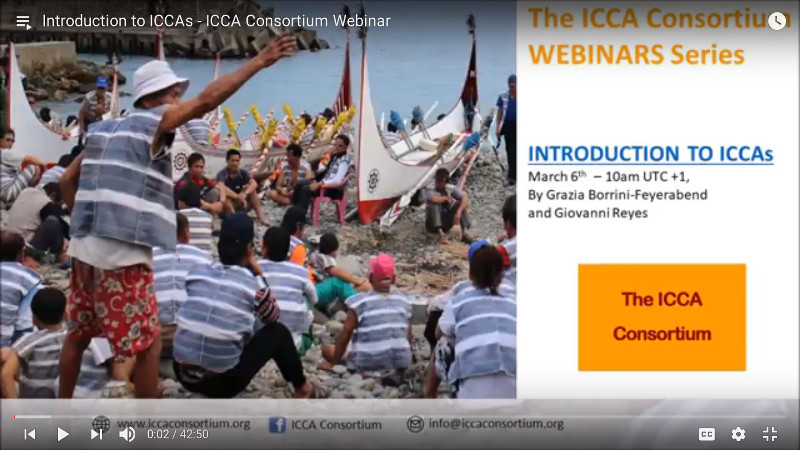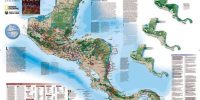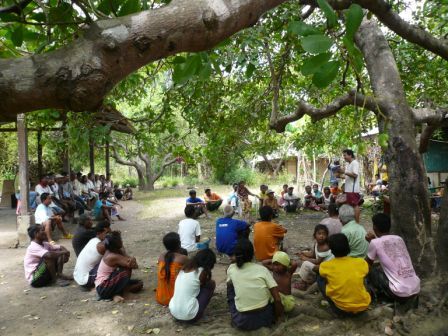 The term “ICCA” is an abbreviation for a phenomenon that has many diverse manifestations and names in cultures and locations around the world. These include wilayah adat, himas, agdals, territorios de vida, territorios del buen vivir, tagal, qoroq-e bumi, yerli qorukh, faritra ifempivelomana, qoroq, ancestral domains, country, community conserved areas, territorios autonomos comunitarios, sacred natural sites, locally-managed marine areas, and many others. The ICCA abbreviation may encompass, but should never obscure, the diversity of such terms, which is a value in itself. Local / customary names should always be preferentially used, leaving the term ‘ICCA’ for general or inter-cultural communication…
The term “ICCA” is an abbreviation for a phenomenon that has many diverse manifestations and names in cultures and locations around the world. These include wilayah adat, himas, agdals, territorios de vida, territorios del buen vivir, tagal, qoroq-e bumi, yerli qorukh, faritra ifempivelomana, qoroq, ancestral domains, country, community conserved areas, territorios autonomos comunitarios, sacred natural sites, locally-managed marine areas, and many others. The ICCA abbreviation may encompass, but should never obscure, the diversity of such terms, which is a value in itself. Local / customary names should always be preferentially used, leaving the term ‘ICCA’ for general or inter-cultural communication…
In any case, for many custodian communities, the connection with their territories is much richer than any word or label can express. It is a bond of livelihood, energy and health. It is a source of identity and culture, autonomy and freedom. It is the connecting tie among generations, preserving memories from the past, and connecting those to the desired future. It is the ground on which communities learn, identify values and develop self-rule. For many it is also a connection between visible and invisible realities, material and spiritual wealth. With territory and nature go life, dignity and self-determination as peoples.
The following three characteristics identify an ICCA:
- There is a close and deep connection between a territory or area and an indigenous people or local community. This relationship is generally embedded in history, social and cultural identity, spirituality and/or people’s reliance on the territory for their material and non-material wellbeing. click The custodian indigenous people or community may or may not physically reside in the territory, although the vast majority of ICCAs are inhabited and regularly used by their custodian communities. Notably, there are diverse views regarding what an ICCA is vis-à-vis the entire territory of an indigenous people or the collective customary lands, waters or other natural resources of a community. For some, there is no distinction between an ICCA and an entire territory or collective customary lands and waters. For others, an ICCA is one or more special places within such a territory where special rules apply. The two views are largely compatible, and diverse understandings are an asset, rather than a problem, as long as the concerned community is informed, aware, able to discuss matters freely and capable of reaching an internal consensus.
- The custodian people or community makes and enforces decisions and rules (e.g., access and use) about the territory, area or species’ habitat through a functioning governance institution. click The existence of the ICCA and the legitimacy of its governing institution and rules may or may not be recognised in statutory law of the relevant country. The important condition, however, is that they function de facto.
- The governance decisions and management efforts of the concerned people or community contribute to the conservation of nature (ecosystems, habitats, species, natural resources), as well as to community wellbeing.
“Disrupted ICCAs” may be territories and areas under the long-term full control of local communities and indigenous peoples that are in a poor state of conservation for a variety of influences and conditions that developed outside of their control. They may be well-conserved territories and areas where communities would like to live sustainably, but have been removed and deprived of management control because of development and conservation initiatives or for other reasons. They may be “disrupted” because there is no way of accommodating them under existing national legislation and policies (in some cases national legislation does not even acknowledge the existence of “communities” or “indigenous peoples” as social actors). In such cases, ICCAs may somehow exist de facto on the ground and play important roles for biodiversity conservation… but have little long term security. 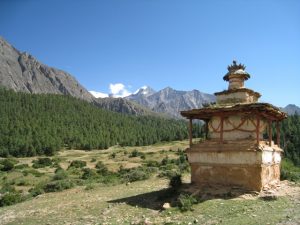 The challenge is to make sure that disrupted ICCAs are appropriately recognized and supported as they re-create and strengthen themselves. All ICCAs should enjoy recognition, support and protection from threats (which, unfortunately, abound).
The challenge is to make sure that disrupted ICCAs are appropriately recognized and supported as they re-create and strengthen themselves. All ICCAs should enjoy recognition, support and protection from threats (which, unfortunately, abound).
“Desired ICCAs” may be related to the life plan of new or reconstituted communities that decide to pull themselves together in relation to a common environment, socio-ecological principles and vision. In so doing, they develop a common identity for themselves as a “community” and for their territory as an “ICCA”. “Desired ICCAs” may refer to a pre-existing historical situation or may start anew on the basis of shared values and/or hard work for the restoration of a specific territory. An important example of a “desired ICCA” may be the new territory of an indigenous community relocated onto new land. If, for a variety of reasons, the community decides to accept living in the new territory, it may consciously work to develop the bond with it, along with a form of governing institution and positive practices (the three ICCA characteristics).
Emblematic ICCAs are those that have great potential to be inspiring examples. They may be representative sites (e.g., common ecosystems or situations) or highly visible sites (e.g., historically or culturally important or otherwise well-known). They may even include those where current threats to culture and nature are so great that positive action and self-strengthening there would serve as an inspiration and example for other communities and allies. You can visit a number of emblematic ICCAs here.
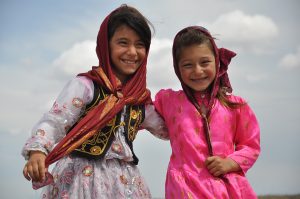
In the last decades, ICCAs have become known and recognised as essential features for the conservation of nature, sustainable livelihoods, the realisation of collective rights and responsibilities, and the wellness of living beings on our planet—all of which are under attack by a variety of economic and political forces. They include cases of continuation, revival or modification of traditional practices, some of which are of ancient origin, and also include new initiatives, such as restoration of ecosystems and innovative uses of resources employed by indigenous peoples and local communities in the face of threats and of opportunities.
- ICCAs help to conserve critical ecosystems and threatened species, maintain essential ecosystem functions (e.g., water security), and provide corridors and linkages for animal and gene movement, including between two or more officially protected areas;
- ICCAs are the basis of cultural and economic livelihoods for millions of people, securing resources (energy, food, water, fodder) and income;
- ICCAs are part of indigenous peoples’ and local communities’ resistance to destructive ‘development’, e.g. rainforests threatened by mining, dams, and logging industries, ecologically sensitive high-altitude ecosystems threatened by tourism, over-exploitation of marine resources by industrial fishing, etc.;
- ICCAs are based on rules and institutions “tailored to the context” that are skilled at adaptive management and capable of flexible, culture-related responses to change;
- ICCAs are built on sophisticated collective ecological knowledge and capacities, including sustainable use of wild resources, maintenance of agro-biodiversity and local management methods that have stood the test of time. They are typically designed to maintain crucial livelihood resources in times of stress and need, such as during severe climate events, wars, and natural disasters;
- ICCAs play a crucial role in securing the rights of indigenous peoples & local communities to their land and natural resources through local governance – de jure and de facto;
- ICCAs help to maintain synergy between agricultural biodiversity and wildlife, providing larger land/waterscape level integration;
- ICCAs offer crucial lessons for participatory governance of official protected areas, that may help to resolve conflicts with local people;
- ICCAs offer lessons in systems of conservation that integrate customary and statutory laws;
- ICCAs help prevent excessive urban migration;
- ICCAs can be the foundation of cultural identity and pride for countless indigenous peoples and local communities throughout the world.
The global coverage of ICCAs has been conservatively estimated to be comparable to that of governments’ protected areas, i.e. about 13% of the terrestrial surface of the planet. Globally, 400-800 million hectares of forest are owned/administered by communities, and land and resources in other ecosystems are also under community control. By no means are all of the areas under community control effectively conserved and secured (and therefore considered as “defined ICCAs”), but a substantial number are.
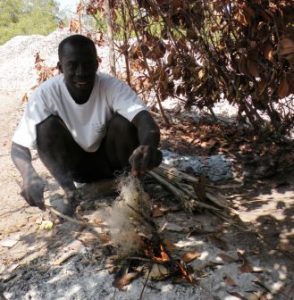
- Land and water grabbing, especially, the expropriation of “the commons” through processes of nationalisation and privatisation of land and natural resources, expropriation for the development of large infrastructure projects (dams, ports, roads, etc.), and land encroachments by illegal settlers;
- Inappropriate “development” interventions and the unsustainable use of renewable and non-renewable resources (timber, fauna, minerals, etc.) by powerful outsiders or community members under the influence of market forces and perverse incentives;
- Undermining of traditional institutions by centralised political systems, whereby governments take over most of the relevant functions and powers;
- Inappropriate development and educational models, religious intrusions, and externally-driven change of local value systems (acculturation);
- Lack of appropriate recognition and lack of appropriate political, legal and economic support that hamper community efforts to conserve their territories and natural resources through traditional means (this may include rules imposed by national conservation schemes such as protected areas or payments for economic services);
- External and internal conflicts, inequities and weak local institutions;
- Environmental and socio-economic disasters related to climate change and other major socio-economic change outside of local control.
First published on 04/10/2016, and last updated on 01/15/2019

